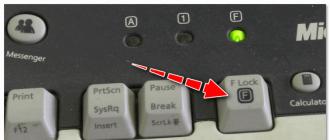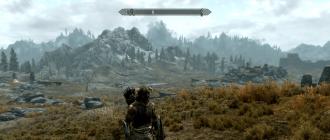- To undo the last change, press the Control+Z keys, or click the Undo icon on the Standard toolbar, or select the Edit/Undo menu item. Click the small triangle to the right of the Undo icon to display a list of all changes that can be undone. You can select multiple changes and undo them all at once.
- After canceling the changes, the Retry line becomes active. To redo your changes, do Edit/Redo, or press Control+Y or click the Redo icon. As with the Undo icon, click on the triangle to the right of the icon and a list of changes that can be redone will be displayed.
Document revision tracking
You can use several methods to track revisions made to a document.
- comparison of documents
Make your corrections to a copy of the document (saved in a different directory or under a different name, or both), then use Writer to merge the two files and show the differences in them. Choose Edit > Compare Documents
- recording corrections
To start tracking (recording) revisions, select Edit > Changes > Record.
To show or hide revisions, choose Edit > Changes > Show.
Place the mouse cursor over the marked fixes; you will see a tooltip showing the type of revision, author, date and time of revision. If Verbose tooltip mode is enabled, you will also see the recorded comments for this fix.
To enter comments on a recorded revision, place the cursor in the revision area and select Edit > Changes > Comment. In addition to being able to view the comment as a detailed tooltip, the comment is also displayed in the list on the Accept or Reject... dialog.
You can move from one recorded fix to another using the arrow buttons. If there is no need to create a comment for the correction, then the Text field should remain empty.
2. Frame text
Any piece of text in a document can be framed, for this:
select the fragment you need;
open the menu Insert - Frame, the Framing tab, select Style and Color of the line;
click OK.
3. Pagination
- To enable page numbering, you must first enable the required header or footer (header or footer). By enabling the header and footer, you will be able to edit it (in the “Page Layout” text view mode) as normal text. With the cursor in the header, select "Insert" from the main menu, then "Field", then "Page number". The page number will appear. On each page, it will automatically appear and be set to the desired value.
- To move the page number (along with the rest of the header text) to the left corner, center or right corner, place the cursor in the header and switch the paragraph alignment (left, center or right) with the corresponding button on the Writer toolbar.
- If the number should be differently located on the even and odd page, in the page style editing window, disable the “checkbox” “Same content left / right” for the header and footer in which the page number is located. Then place the number properly in the header on one even and one odd page.
4. Inserting information into a document
You can insert it anywhere in the document you are creating. Additional information, which is listed in the Insert menu. Such information includes: symbol, image, table, formula, etc.
For example, to insert a picture, you need to place the cursor in the right place, and then select the menu item Insert - Image - From file and select the desired file.
4.1. Inserting an image
V Editor Writer you can create a simple drawing from autoshapes without leaving the editor. To do this, use the Drawing toolbar.
In Writer, you can create beautifully designed lettering with any text using the Text Effects Gallery on the Drawing Toolbar.
4.2. Inserting a table
Tables can be built in several ways. The simplest is the following:
In the Table menu, select the line Insert;
Then select Table;
In the window that opens, set the number of columns and rows in the new table;
Click OK.
If you need to split or merge some cells, you can from the Table toolbar, select Split Cells or Merge Cells, respectively, and modify the table with these tools.
In the menu that appears, you can set the size of the table, framing, indents, column sizes
4.3 Inserting a formula
Insert formulas in Text Document done using the formula editor. You can call the formula editor using the command Insert - Object - Formula. This opens an additional Elements window in which you need to select the appropriate group.
4.4 Create and insert a chart
A chart is a graphical representation of numerical data. Charts are created by items or data series.
To build charts, go to the menu Insert/Object/Chart.
A chart blank and the Chart Wizard window will appear on the screen.
- First step. Set the chart type.
- Second step. Select a data range.
- The third step is to edit the data series.
- The fourth step is Entering data for the chart elements: title, axis labels, data.
4.5 Creating links
5. Setting text printing options and printer output
In the File menu, select the Print line and in the window that opens, set the following print options:
Required Page Range
Number of copies.
It should be remembered that, unfortunately, does not support duplex printing.
6. Completion of work
To finish working in Writer, do the following:
Menu File/Exit or
Simultaneous pressing of Ctrl+Q keys
Leave your comment!
They say that styles are everything in OpenOffice Writer. Why are they needed?
You are mistaken if you think that styles are something incomprehensible and unnecessary. On the basis of styles in OpenOffice Writer, the entire logic of working with a document is built and many important features, such as pagination, changing page orientation, arranging mirrored margins, and more.
The ability to work with styles in OpenOffice Writer greatly simplifies the process of formatting a document. Now, instead of having to set the required parameters each time, for example, the heading - "Times New Roman, font 16 points, bold, etc. - you simply select the desired Paragraph style. You can open the "Styles and Formatting" window in Menu - "Format" - "Styles" or by pressing F11. OpenOffice.org Writer has five types of styles:
Paragraph styles affect the entire paragraph;
Character styles affect a block of text in a paragraph;
Page styles affect page formatting (page size, margins, and so on);
Frame styles affect frames and graphics;
List styles affect numbered and bulleted lists.
You can also modify styles and create your own. To do this, in the Styles and Formatting panel, click right click mouse and select "New" or "Edit", in the window that appears, select desired parameters new style or modify existing ones.
How to number pages?
Before you start numbering the pages, you need to prepare them: for each page, select the desired style or the same for all. The page numbering process itself consists of two stages: inserting headers and footers and inserting a page number.
If the numbering should start from the first page, then you need to do the following:
1. Select a page style: Menu - "Format" - "Styles" - "Page Style" - "Normal" (or any other other than "First Page").
2. Menu - "Insert" - "Header" or "Footer" (optional) - "Normal", next to which a "tick" will appear.
3. The cursor is in the inserted header, select Menu - "Insert" - "Field" - "Page number".
If the first page of the document should not be numbered, then the following steps must be taken:
1. Select the style of the first page Menu - "Format" - "Styles" - "Page Style" - "First Page".
2. Menu - "Insert" - "Break" - "Page Break" - "Style" - "Normal" (or any other other than "First Page"). The performed actions mean that the first page has the "First Page" style and will not be numbered, and the numbering will start from the second page.
3. Go to the second page. Select Menu - "Insert" - "Footer" or "Header" (optional) - "Normal", next to which a checkmark will appear.
4. Follow Menu - "Insert" - "Field" - "Page Number".
If the first page numbering should start with a number other than 1, then you need to do the following:
1. Menu - "Insert" - "Footer"
2. Now the cursor is in the footer. To insert a page number, follow the menu "Insert" - "Fields" - "Page Number". The page number will be 1.
3. Click on the first paragraph of the text area, or enter the text of the paragraph.
4. Select Menu - "Format" - "Paragraph" (or right-click and select Paragraph from the drop-down menu) to display the Paragraph window.
5. On the Page Position tab, in the Breaks section, check the boxes for Add Break, With Page Style, and the page style you use for the first page of the document.
6. Now the "Page number" field becomes active. Enter the starting number you need into it. Click the OK button to close the Paragraph window.
Note: OpenOffice Writer cannot start pagination from 0.
After the number appears on the page, the numbering style can be formatted like a regular document (Highlight ("Bold", "Italic", "Underline"), Alignment ("Centered", "Left", "Right", "Fit "")).
If you want to remove page numbering:
1. Menu - "Insert" - "Header" or "Footer" - remove the checkmarks
2. To the question that appeared, “Disabling headers and footers will cause their content to be deleted. Delete text? answer YES.
Instead of a page number - "1, 2, 3, etc." - "Page number" is inserted, what should I do?
Just change Document type: Menu - "View" - "Fields" (uncheck).
How to change page margins?
Page margins can be changed using the rulers or by calling the page formatting panel (Menu - "Format" - "Page"). You can also right-click anywhere on the page and from context menu select "Page", the same window will open.
When entering numbers into the table, OpenOffice Writer replaces the entered numbers with others (for example, removes 0), how to get rid of this?
Right-click and uncheck "Number Recognition" in the context menu.
Where is the "Indents and Spacing" panel located?
Open Menu - "Format" - "Paragraph" - "Indents and Spacing" or right-click anywhere on the page and select "Paragraph" from the context menu.
How to change page orientation?
Page orientation can be changed in Menu - "Format" - "Page". If you want the page to first have portrait orientation, then landscape, and then portrait again, you'd better use page styles. Open Menu - "Insert" - "Break" - "Page Break" - "Style" and select the desired style. If you select "Album", then the page will have all the parameters of the specified style, including landscape orientation. Then perform the same operation (Menu - "Insert" - "Break" - "Page Break" - "Style"), only select the style "Normal" (or any other than "Album") and the page will again have a portrait orientation.
Where can I see statistics?
Statistics (number of pages, paragraphs, words, characters) can be viewed in the Menu - "File" - "Properties" - "Statistics". Note that Openoffice Writer counts the number of characters with spaces. The number of words and characters can also be viewed in the Menu - "Number of words".
How to remove borders around text block and footer block?
By default, OpenOffice Writer sets frames for a text block. If this bothers you, you can remove them in the Menu item - "View" - "Text Borders". But if you are working with headers and footers, then it is better to leave frames for ease of perception (it helps to distinguish headers and footers from the main text).
How to paste text without formatting?
Suppose you have written a multi-page document, but you need to add information from a website or other document to the file. Unfortunately, the new part of the text is inserted with different formatting. If you want it to stand up with the formatting of existing text, use Menu - "Edit" - "Paste as" - "Text without formatting".
How to select the entire document and a vertical block of text?
To select all text, open Menu - "Edit" - "Select All", to select a vertical block of text: Menu - "Edit" - "Select Mode" - "Block Area".
How to create a numbered list?
To work with lists, use the Numbered List and Bulleted List icons on the paragraph formatting toolbar. With it, you can move items up or down the list, create sub-items, and even change the style of the bullets. It is more convenient, of course, if you use List Styles (Menu - "Format" - "Styles" - "List Styles").
How to make a footnote?
Place the cursor where you want the footnote to be. Then open Menu - "Insert" - "Footnote". You can choose where to place the footnote: at the end of the document or at the end of the page. To directly format footnotes, select Menu - "Tools" - "Footnotes". In the Customize Footnotes dialog box, select the desired customization options.
To prepare the material, the Writer manual (Translated by Dmitry Chernov, Alexei Eremenko and Dmitry Smirnov) and Maxim Ivanov's article "OpenOffice.org Writer: secrets of setting up and helpful tips"(http://www.zorych.ru/content/view/461/).
More detailed information You can find in the Open Office Writer manual(ftp://lic.ustu/pub/Doc/book/openoffice.org).
See also the user manuals for working with OpenOffice.org on the official website of Infra-Resource LLC
3 years ago
Good afternoon, dear managers. If you work with price lists and are faced with the fact that when sorting columns, pictures do not change places in relation to a cell, then this video is for you. Simple, but very necessary knowledge. I wish you a good viewing. Sincerely, Your Oksana LUKINA
5 years ago
Given general information about tables. Showing various ways creating tables in OpenOffice.org Writer documents. Discussed various ways to add and remove columns and rows. Learn different ways to change column widths and row heights. The possibility of aligning the width of the columns and the height of the rows of the table is shown. Methods for merging and splitting cells are presented. Learn how to design tables. The ability to set borders and fill table cells is shown. The concept of sorting tables is given. The possibilities of sorting data in the table are shown. The possibilities of alignment and placement of tables on pages, including the transfer of table headers to the next pages, are considered.
5 years ago
Shows different ways to add and remove table elements: columns, rows and individual cells. Explore various ways to change column widths and row heights, including using autofit width and height. The basic actions with sheets are considered: adding, renaming, moving, copying and deleting. The structure of the formula is presented. Provides information about formula operators and examples of their use. Various ways of creating and editing formulas are shown. The concept of functions is given. Moving and copying formulas is considered. The features of using references in formulas are considered. The features of the use of absolute references are noted.
5 years ago
OpenOffice applications introduced. Showing advantages over others office suites. The main elements of the OpenOffice interface are presented. The possibilities of working with the menu of the OpenOffice window are shown. Toolbars and options for working with them are presented. Describes how to work with toolbar controls: buttons, lists, etc. OpenOffice file formats are presented. The main tools for working with file system. The features of windows for working with the file system are considered. The main actions with files are considered: opening, saving changes, saving under a new name and / or in a new folder. Shows the creation of new documents.
5 years ago
Characteristics of the main parameters of the font are given and ways to change them are shown. The ability to set an arbitrary font size is shown. The possibilities of highlighting text in a document using font parameters, including changing the style, underlining, using spacing, are considered. The design of upper and lower indices is shown. Learn how to align and indent paragraphs relative to page margins. Methods for setting line spacing in a paragraph and spacing between paragraphs are given. Shows how to set paragraph borders and how to set border options. Possibilities of installation of filling are given. Shows the creation of a numbered list. Possibilities of setting list parameters, deleting numbering are presented. Creation shown bulleted list. Possibilities for setting list parameters, selecting list markers, deleting markers are presented.
6 years ago
A detailed course on Word, Excel and Powerpoint - https://goo.gl/QmDVwh Often, when issuing diplomas, term papers, laboratory and other similar documents, you need to insert a standard frame according to GOST. Of course, you can use AutoCAD, draw a frame in it and paste it into a text document, but this is not the most convenient way. There is a great template that makes it much easier to insert standard borders and title blocks into technical documents. How to install this template will be discussed in the video: http://pcsecrets.ru/microsoft-word/kak-sdelat-ramku-v-word.html Template - http://pcsecrets.ru/files/Forms_A4. zip
1 year ago
Download the frame for AutoCAD. Create an easy stamp A1, A2, A3, A4 Download frames: http://autocad-prosto.ru/fartusov-maksim/uroki/ramki-autocad/Dinam-blok-Ramok-autocad.zip -- Take the course "AutoCAD for 40 minutes": http://2018.autocad-prosto.ru/autocad-za-40-minute?utm_source=youtube&utm_medium=description-pod-video&utm_campaign=ramki-autocad In this video Maxim Fartusov (https://vk.com/ maksimfartusov) - the creator of the site AutoCAD-prosto.ru (http://autocad-prosto.ru) - shows where to download and how to create frames with stamps in AutoCAD. The lesson will answer the following questions: - Where to download frames for AutoCAD (formats A0, A1, A2, A3 and A4) - How to easily and quickly create a frame of any format in AutoCAD - How to make a frame with a stamp A1, A2, A3, A4 - How insert a frame quickly into AutoCAD The official channel of the AutoCAD-Prosto.ru educational project (AutoCAD Video Training), created by Maxim Fartusov. This channel was created in order to make learning the AutoCAD program accessible and understandable for everyone who wants to learn how to draw. Our AutoCAD courses and video tutorials will teach you how to design visually and without unnecessary water. Without tutorials and books, you will achieve results on your own! The author of the video in social networks: Vkontakte: https://vk.com/maksimfartusov Facebook: https://www.facebook.com/maksim.fartusov Odnoklassniki: https://ok.ru/profile/810704919/ Vkontakte project group: https://vk.com/autocadprosto Official website of the project: http://autocad-prosto.ru

















